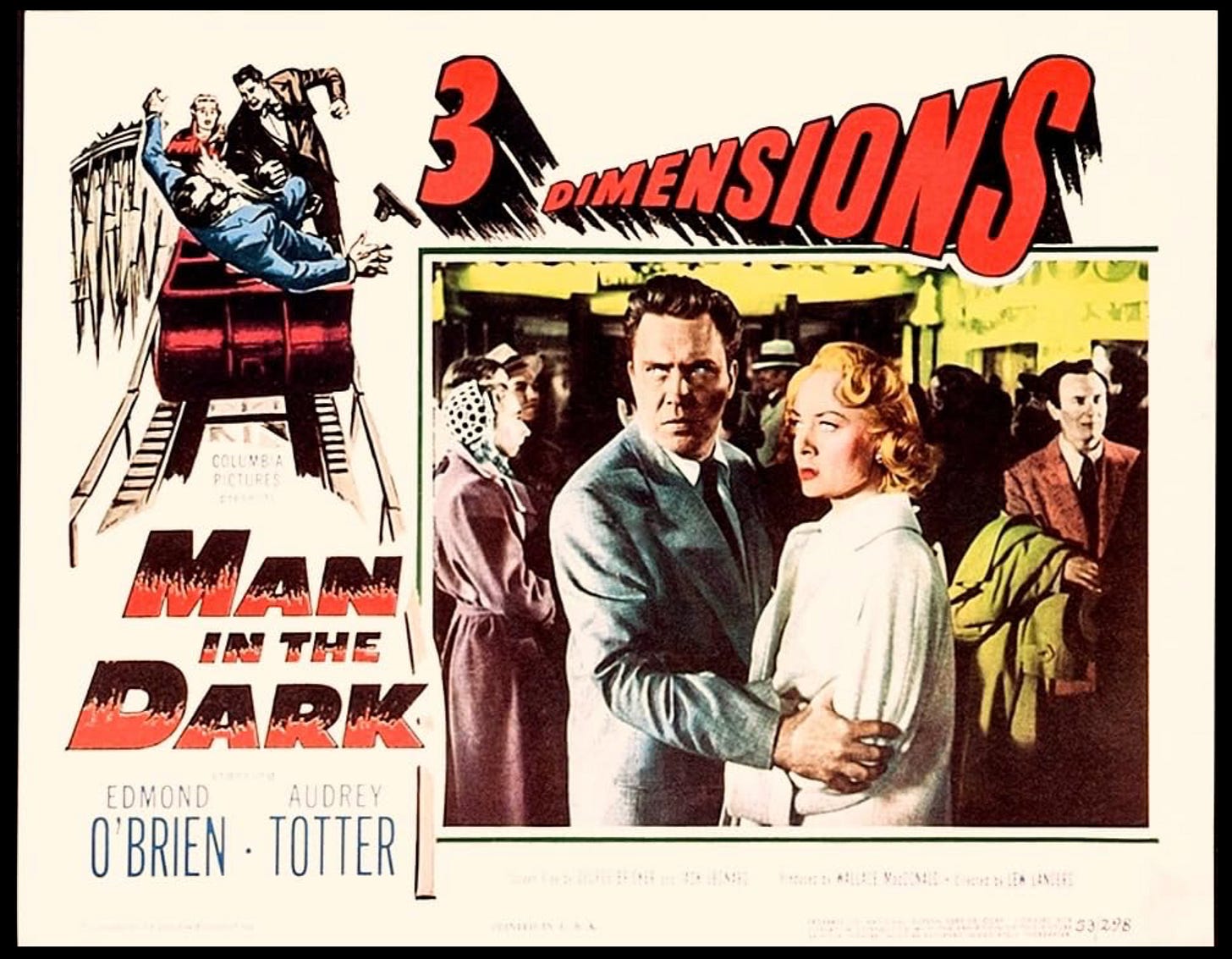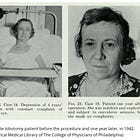Fact or Fiction: Can Surgery End Crime?
The 1953 film, Man in Dark Features A Criminal Whose Criminal Tendencies Are Eliminated Through Surgery
Studying films and media from decades ago can become a challenging but no less interesting experience for the investigator. The evolution of film, in a relatively short period, is astonishing. In less than a century, we have gone from black and white, practical effects and silly props to ultra-high-definition scenes, surreal special effects, and even underwater production films. The gigantic technological and stylistic leap in filmmaking may make it more challenging to sit through the viewing of a 70-year-old movie*. Yet, like many art forms, films continue to explore similar questions. This week’s film is broadly about free will and scientific technocratic solutions to social programs.
*There are old films we enjoy, this one was not particularly well made, but it nicely dealt with issues related to crime, medicine, and efforts to prevent criminals. Man in the Dark was described as being of “B or C quality, from the standpoint of cinematic art” (Miller, 1953).
A Film about Making a Criminal Into an Honest Man
Man in the Dark is a film about Steve Rawley, a criminal who gets his sentence pardoned because he submits to an experimental form of brain surgery meant to remove his criminal behavior forever. This film was made by Lew Landers and was released back in 1953 after being filmed, produced, and completed in just 11 days. It was one of the very first significant 3D productions by Columbia Pictures, one of the largest film companies. One article praised the “unbelievable new heights in three-dimensional realism” in the film (Sioux, 1953).
In the beginning of the film, Steve is at a mental institution. A police officer came to see Steve and told him, “You will be outside soon. You can forget about going to a cell. When this is over, that is if everything works out alright.” Suggesting something was going to change this criminal into a law-abiding citizen. The prisoner responded sarcastically, “How would you like to have your lid opened?” This is the first time viewers understand what is about to happen: brain surgery will eliminate Steve’s criminal tendencies. Steve’s operation was moved forward and he resisted violently. This showed that Steve was prone to violence before the operation.

Dr Marston operated on Steve and told the team of doctors around him that they “might have made a little history tonight.” The film does not depict the operation in detail, yet it involved a large team of doctors congregating around Steve’s head suggesting some kind of psychosurgery. An article from that time wrote that Steve was “freed of his criminal tendencies by a frontal lobotomy operation,” (Key, 1953; Taylorville, 1953). While the film did not specifically call this operation a lobotomy, it is likely viewers would have made that association (see below).
At this time, a private investigator came to the hospital and asked to speak with Steve. He was there trying to help an insurance company retrieve the 130 thousand dollars Steve, and his cronies stole to help the insurer avoid covering the insured money. He told the doctor, “I heard you are making an honest man out of him.” The doctor insisted that some instincts “can be removed by surgery.”
When Steve wakes up, the doctors used a polygraph to demonstrate he lost his memory (we should point out that this implied the polygraph is legitimate). Steve was kidnapped by his former associates, who tried to get him to remember where he hid the money. Steve appeared to have changed. They hit him, and he does not respond violently. Note the sharp contrast with his reaction to the surgery having been moved forward. After some shenanigans, Steve started to remember portions of his past and embrace them. He eventually found the money and returned it because the woman he loved wanted to start a new life, free of the criminal past.
Real Life Cases: Brain Surgeries Allegedly Cut Criminal Tendencies
To a modern audience, the idea of “removing crime from the brain” may seem implausible. The sort you find in science fiction. Notwithstanding, the concept of shortening a prison sentence by willingly submitting oneself to an experimental brain operation is not unheard of.
In this article we cover a time period in which the press was enthusiastic about lobotomy and in which this operation is used to allegedly treat a wider variety of conditions.
We have mentioned on multiple occasions the case of the “Brain burglar”, Millard Wright, a man sentenced to prison on account of burglary, who, in 1947, got his sentence pardoned by having a brain surgeon perform a lobotomy to cure him from his devious impulses. At first, the operation was hailed as a success. Sadly, the story ended in tragedy with Wright being detained a couple of years later for the same crimes, and eventually committing suicide while awaiting his new sentence. We have found other criminals that requested lobotomies to reduce their sentences. In some cases, these operations were approved and carried out, such as Frank DiCicco, who kept a crime free life for several years after his lobotomy. Steve’s memory loss is also aligned with what the press and medical specialists thought at the time.
In this article we examine One Flew Over the Cuckoo’s Nest and how it criticized the use of medical technologies to subjugate patients.
An article in The Sioux City Journal described Man in the Dark as “true to life” (Sioux, 1953). This suggests that viewers would not have only connected the procedure to lobotomy, but also would have seen the plot as plausible. Further, film reviews in 1953 spoke about lobotomy being used to “free” Steve from his “criminal tendencies.” This language is remarkably similar to that used by journalists when discussing the case of Millard Wright. For example, an article in the Pittsburgh Press reported that Wright won approval to submit himself to a “delicate brian operation” to “ free him of his criminal tendencies” (Pittsburg, 1947). These similarities likely suggest that ideas about the power of these operations to change people’s behavior were common and widely shared.
Efforts to reform wayward individuals into good citizens through medical interventions were popular in the mid 20th century. In pop culture, there have been more examples of a similar reasoning, such as in the novel turned into classic film, A Clockwork Orange, where the young violent protagonist agrees to undergo an experimental technologic, therapeutic and terrifying procedure to change his aberrant ways. Interestingly, both stories show prisoners giving consent to undergoing these procedures. Yet, such consent can hardly be considered freely given because these prisoners were offered reduced sentences in exchange for participating in experimental procedures.
Here we discuss some modern cases which appear to suggest criminal tendencies may have a physiological basis.
Conclusions
Many of these films explored how advances in science and technology could impact the lives of everyday people and those of people who had been imprisoned for committing crimes. Man in the Dark and A Clockwork Orange both posited profound questions regarding free will and the choice of good and evil. Both seem to suggest that criminal impulses have a physiological basis. Further, recent advances in neuroscience also appear to suggest that physiological factors can affect people’s behaviors. Thus, raising the possibility that many undesired behaviors could be eliminated if they were treated like diseases.
You can read our analysis of this iconic film here. You may be shocked to learn that similar aversion therapies were tried to try and reform criminals.
Nevertheless, these films also highlight some of the dangers in trusting scientific and technical solutions to complex social problems. In Man in the Dark, Steve slowly started to re engage in criminal behavior and was willing to take the money and run. The operation does seem to have changed Steve even if he did use violence to try and escape his captors. In the end, it seems the operation affected him, but his choice was based on the desires of the woman he loves rather than his impulses. In contrast, Clockwork Orange is far more critical of these kinds of interventions by explicitly raising the significance of people choosing how to act.
Despite not excelling as good cinema, Man in the Dark, resonates far beyond its original release for its treatment of crime, reform, and the use of medical interventions to alter human behavior and attitudes. The film is an entry point into a time where optimism in science as a panacea for social ills was rife. While the movie does not explicitly raise these issues, it invites viewers to reflect on them indirectly.The film implicitly suggests science can be useful in combating society’s ills, but that environment also plays an important role. In doing so, it highlights tensions between individual’s freedoms and the benefit to society. Finally, the movie leaves viewers thinking about the extent to which the surgery was successful and whether such interventions would be desirable
Sources









